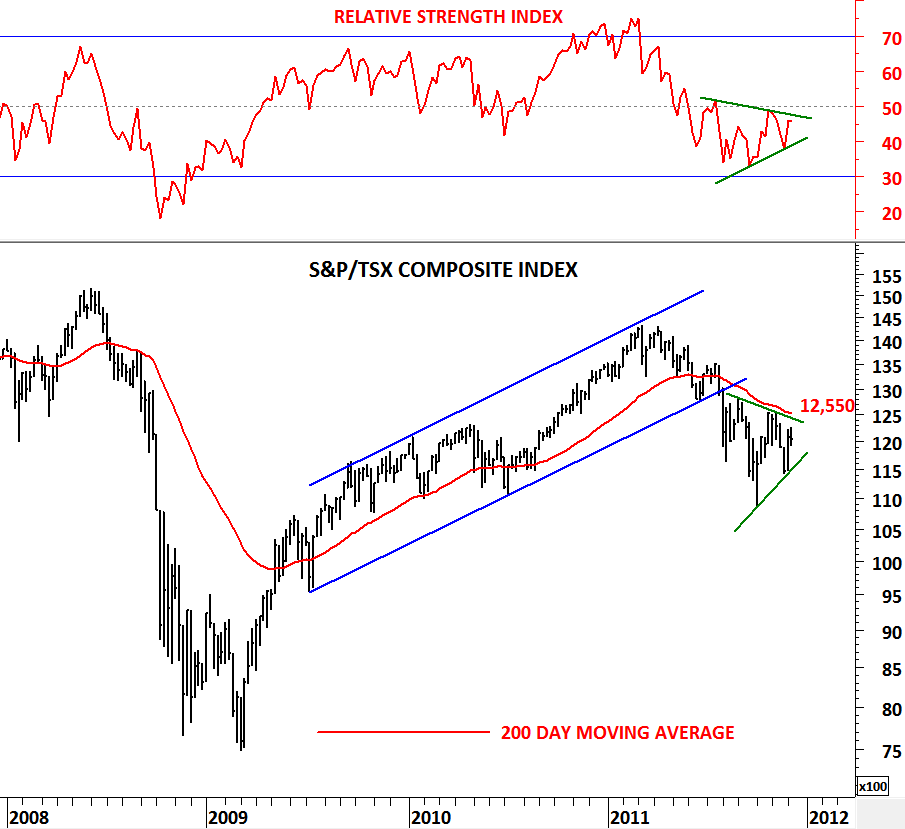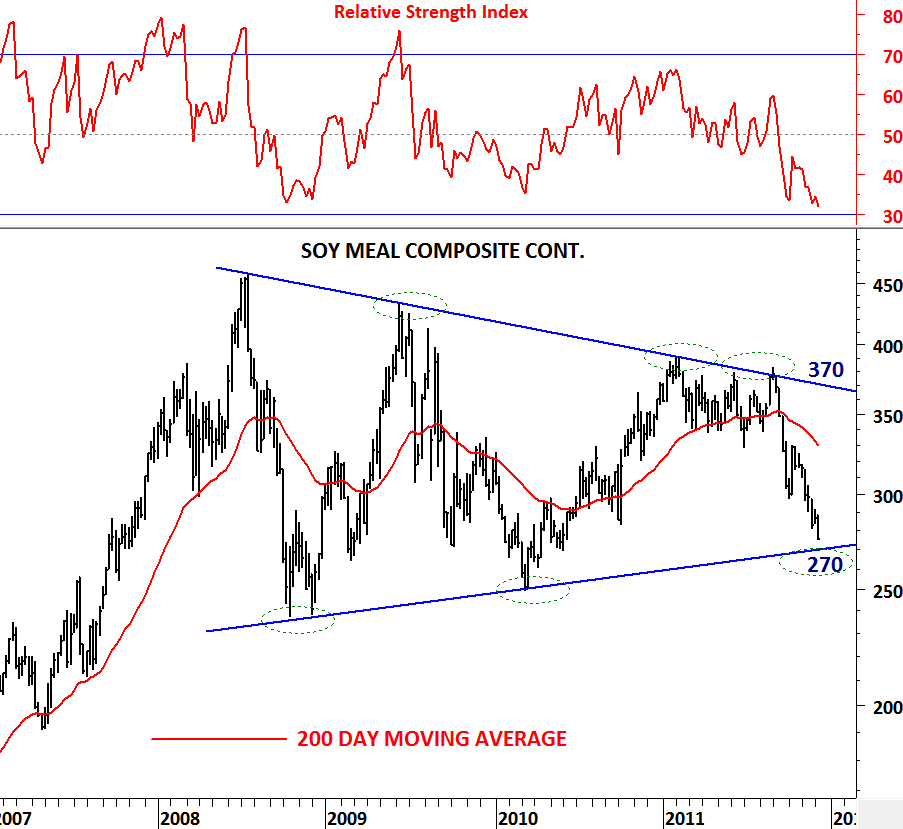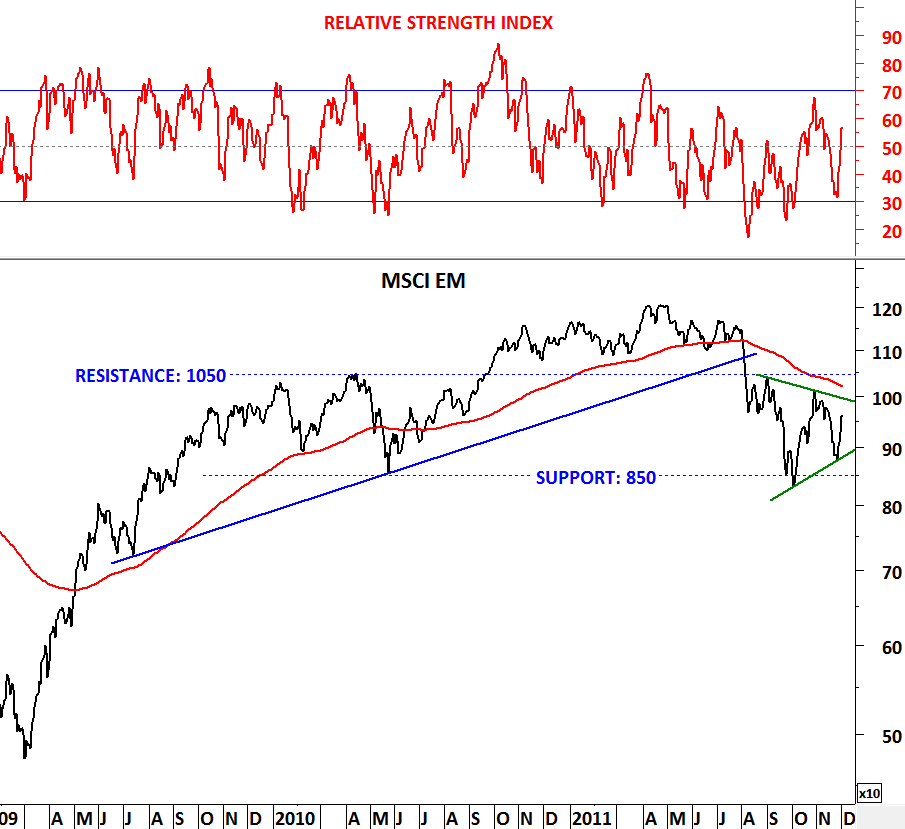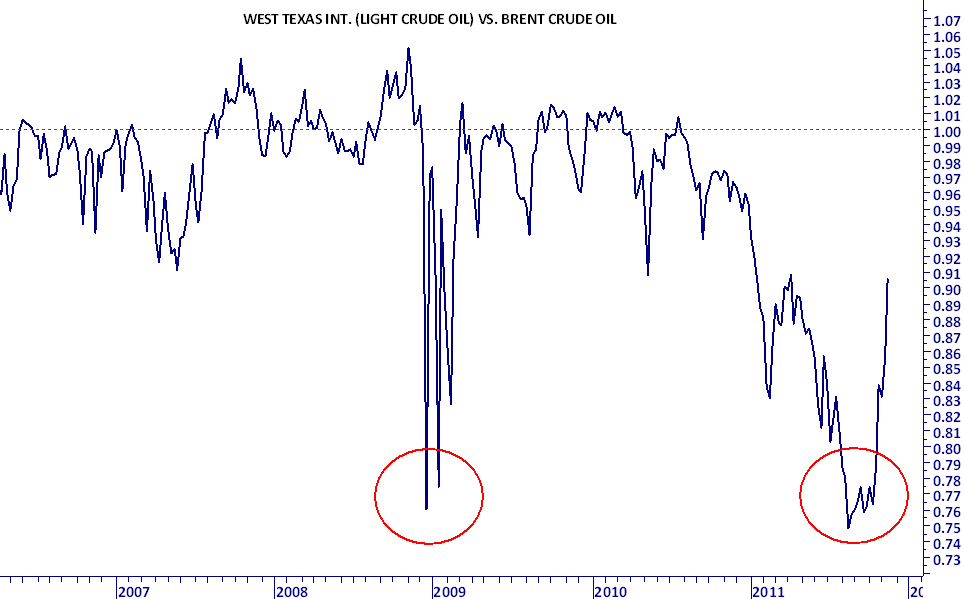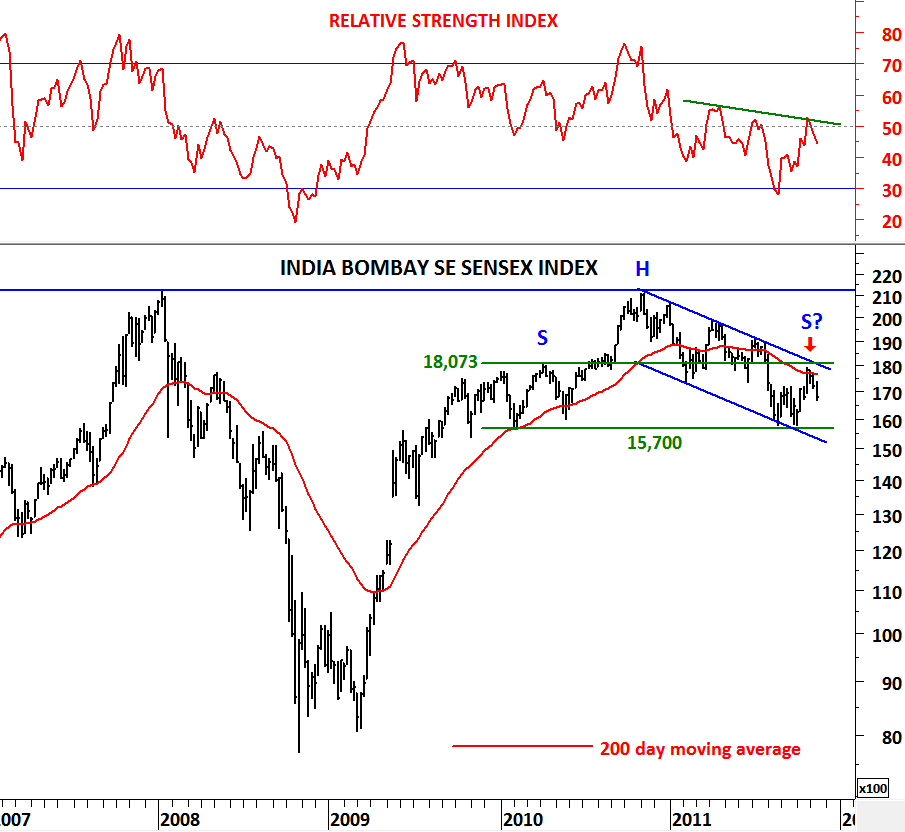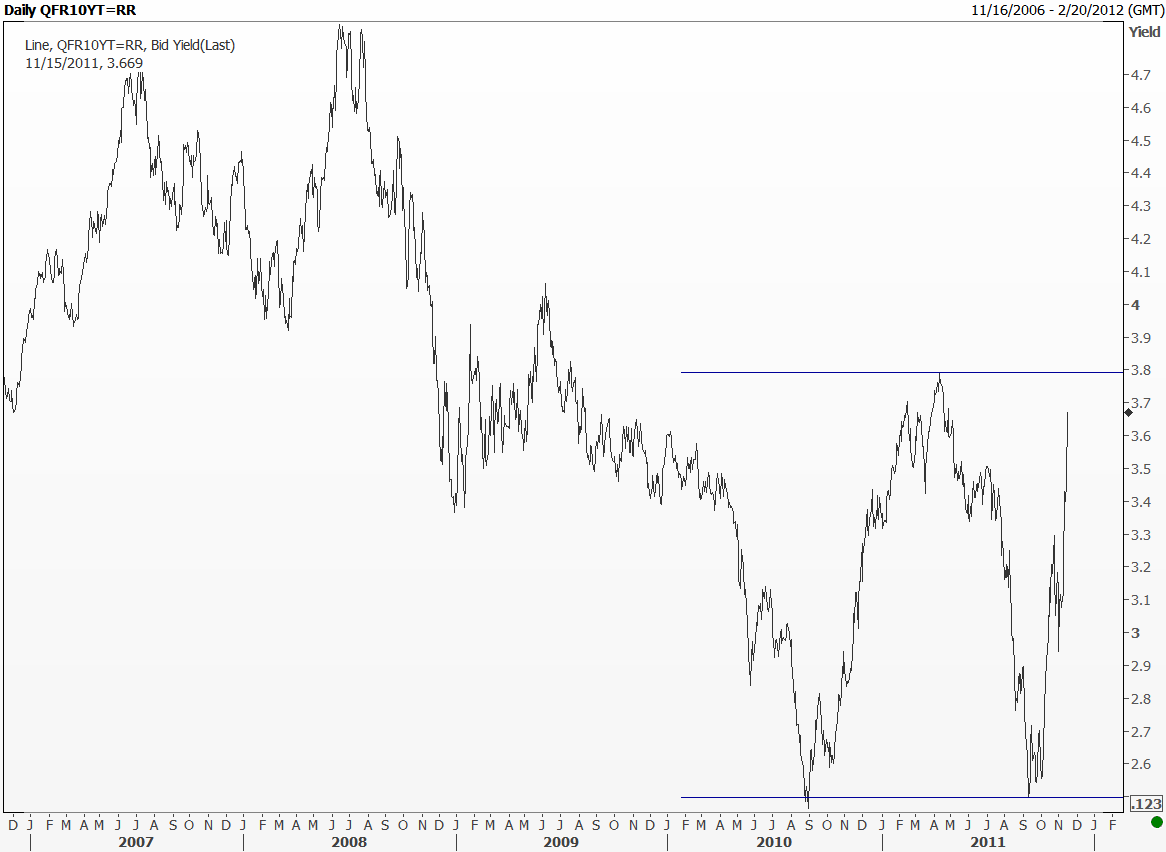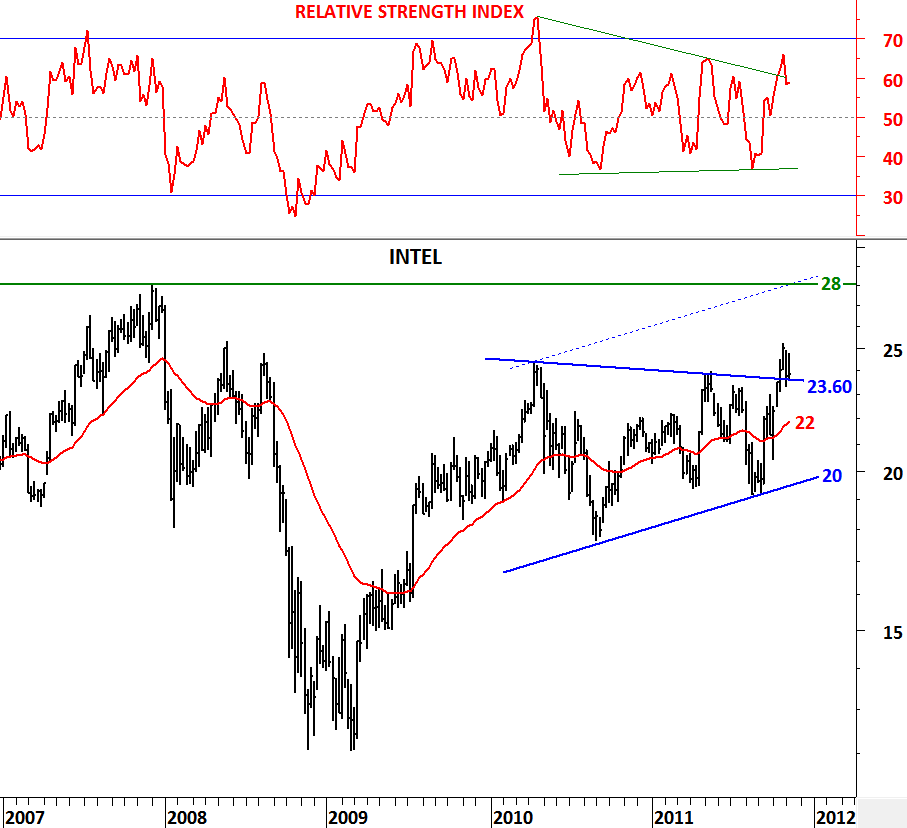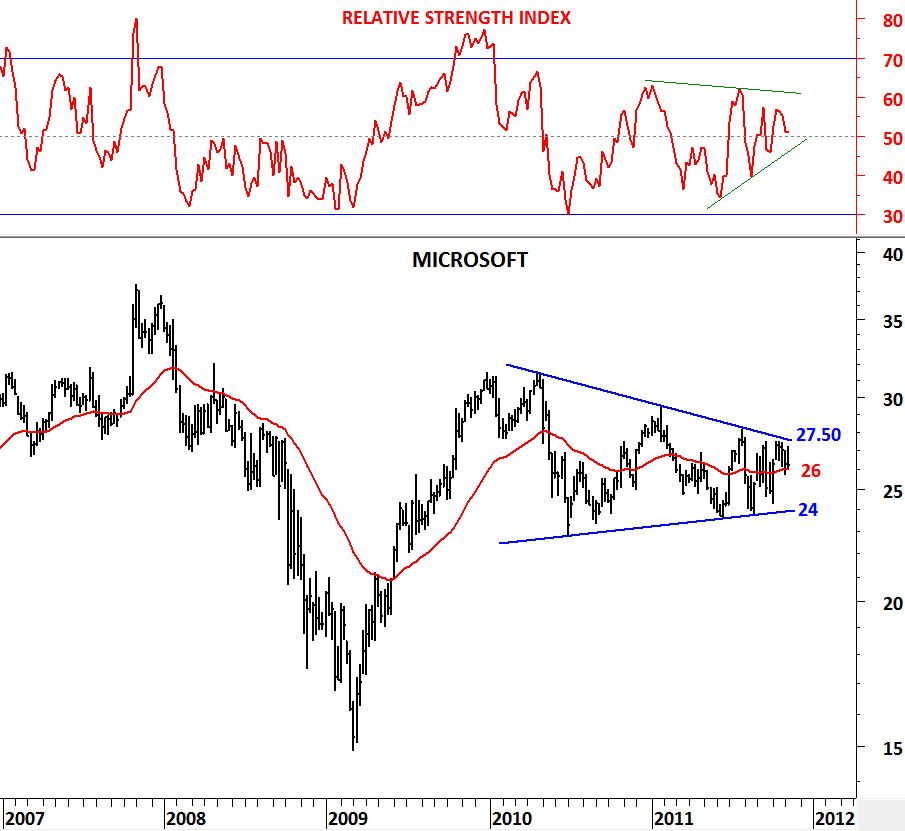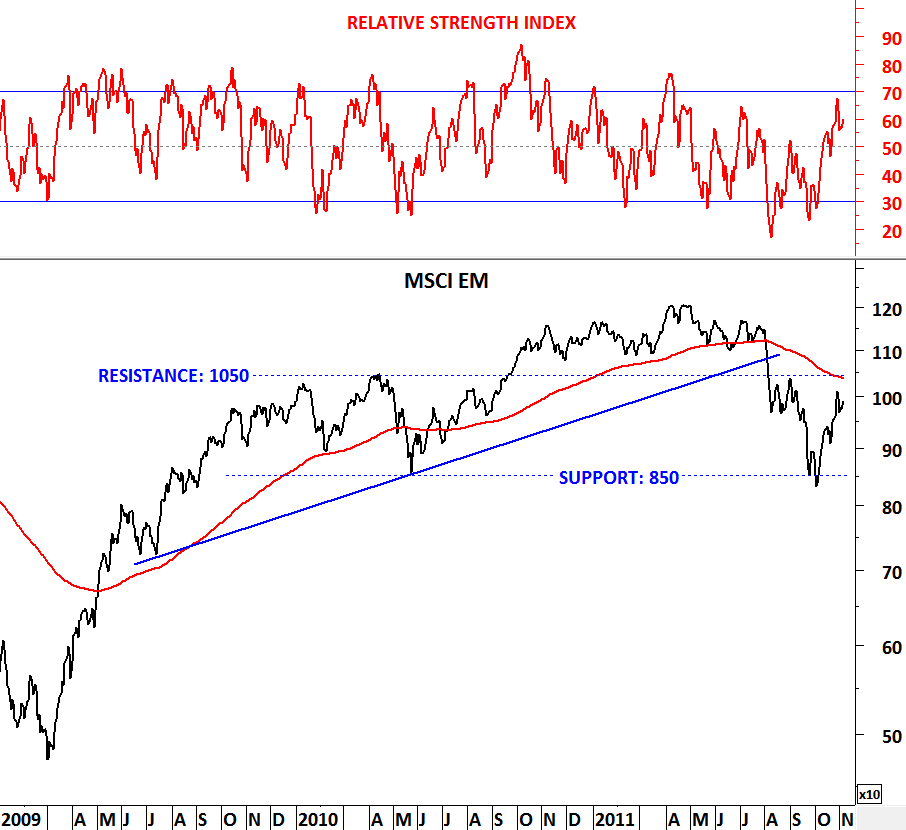S&P/TSX Composite Index (CANADA)
The longer price stays below the 200-day moving average the harder it gets for the long-term trend to reverse and the price to move back above the resistance areas. This could be the case for most of the equity markets as major equity indices are now forming consolidation ranges below their long-term moving averages. Bearish outlook remains intact and suggests these chart patterns could resolve on the downside for several equity markets. Canada’s S&P/TSX Composite Index reversed its 2 year-long uptrend in August 2011 with a long weekly bar that breached 13,000 levels. Since August the index couldn’t move back above 13,000 and during the same time the long-term moving average (200-day) declined to 12,550 levels. Unless the index breaks above the 200 day moving average and out of the sideways consolidation range Canadian equities would see more downward pressure. Watch this consolidation range with a bearish bias and place a long-term stop-loss at 12,550 levels.

